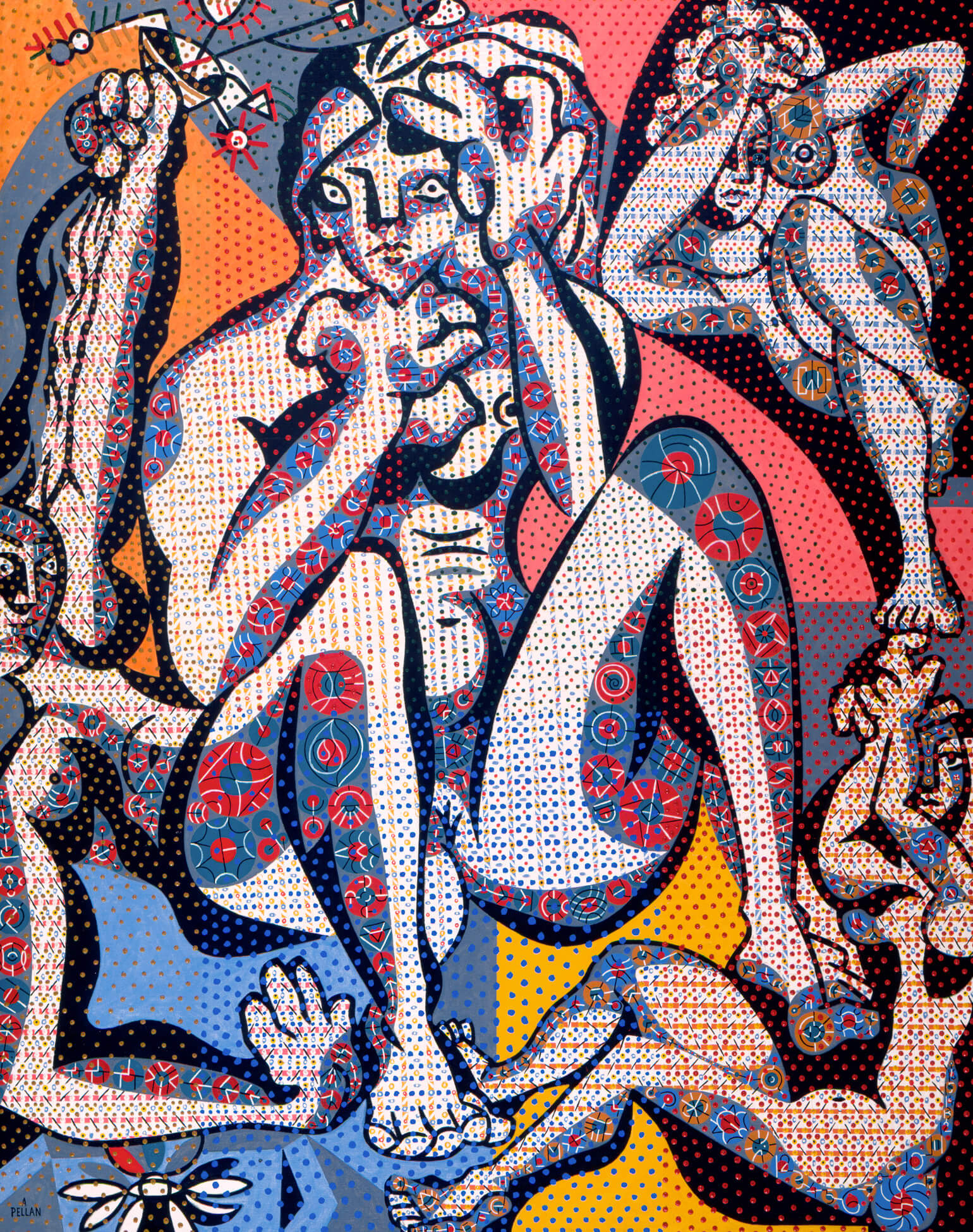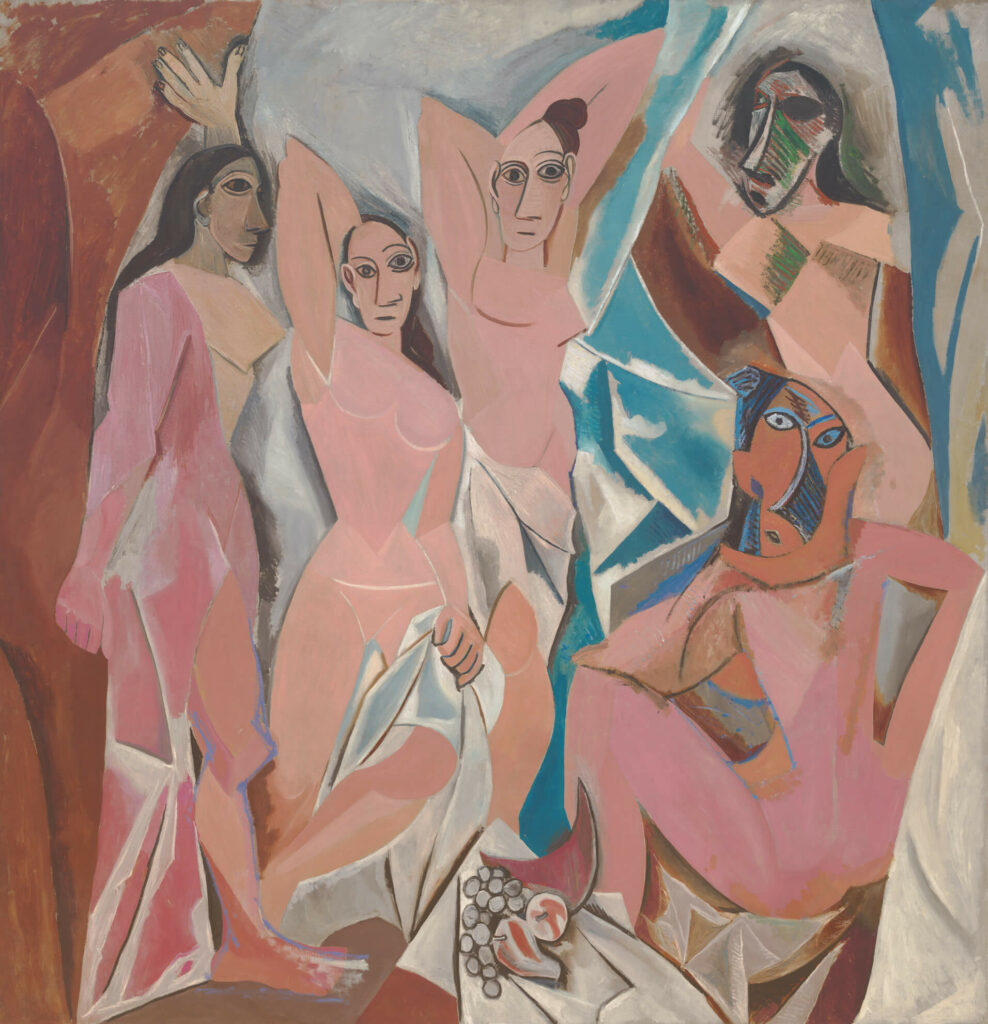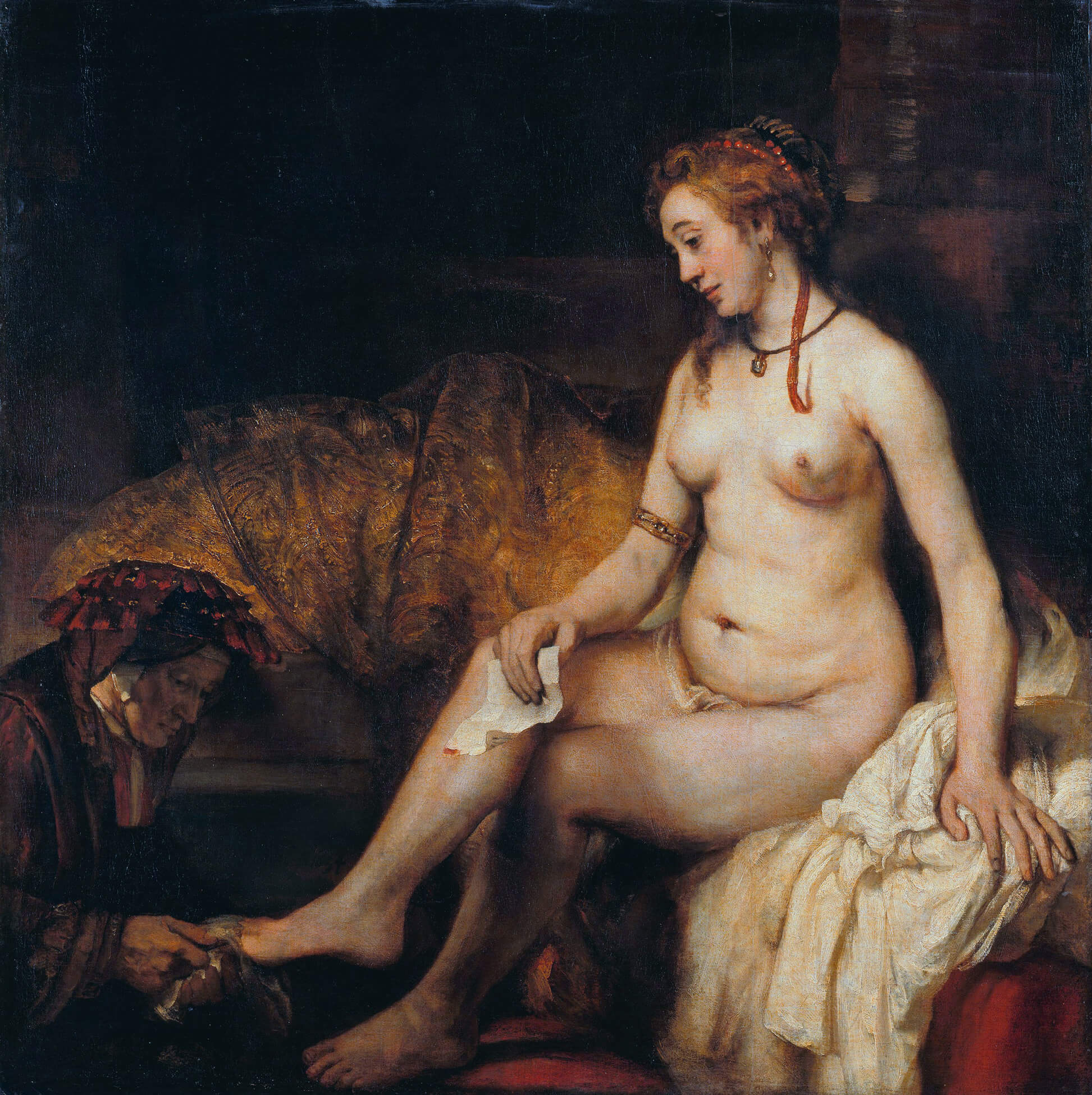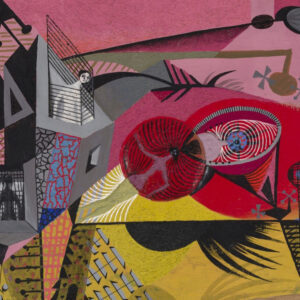Four Women 1944–47

Alfred Pellan, Quatre femmes (Four Women), 1944–47
Oil on canvas, 208.4 x 167.8 cm
Musée d’art contemporain de Montréal
Alfred Pellan became notorious for including bold explorations of sexuality in his work, and Quatre femmes (Four Women) was among a group of paintings that were censored in a 1956 exhibition. This canvas depicts four nude women in various positions, unabashedly supine. Their bodies are disarticulated—stylized and awkwardly contorted—and each figure’s face is reduced to its most basic elements.
The centre of the painting is occupied by a monumental female nude who reclines with her legs spread—an inviting gesture that provides an intimate view of her body. Yet there is an undercurrent of anxiety in her sensuality. Immobile, her eyes staring straight ahead, she echoes the sense of violence in the painting, a quality evoked by the emphatic line around her body. She seems to grasp her head not in ecstasy, but in fear.
This torment is mirrored by the other three female figures, who are held captive, in cramped conditions, within the picture plane. We are reminded that the artist is in control, not the women he depicts. They have no say in how they are placed within his composition. They are offered on the altar of the canvas to the greedy eye of the viewer. Rather than expressing an authentically feminine perspective, these bodies represent the desire of the absent (male) gaze. Although this work is ostensibly an homage to feminine beauty, Pellan’s Four Women are the objects of the painting, not its subjects.


In Western art, sexuality was not historically allowed to dominate representations of the female nude; any references to sex were necessarily implicit in order to distance the artwork from pornography. In Four Women, however, sexuality is quite explicit. It is true that there is a decorative pattern in the form of a complex network of small luminous dots, which runs through the picture surface and undermines the depicted nudity. Still, the women are sexualized and voluptuous, and they have been placed in provocative poses. Great masses of white shapes caress their bodies, while thick black outlines emphasize their physicality.
Four Women reflects Pellan’s interest in combining a Surrealist vision with stylistic elements found in works by Pablo Picasso (1881–1973). Here, he draws direct inspiration from Picasso’s Les demoiselles d’Avignon, 1907. The spatial treatment of the canvas is inspired by Cubism: two-dimensional with a non-traditional perspective and multiple viewpoints. In Four Women, Pellan refused to privilege mimetic depiction, choosing instead to scramble codes of representation. This decision could be seen as a challenge to centuries of artists working in the European tradition, who venerated the nude as a prestigious subject.

 About the Author
About the Author
 More Online Art Books
More Online Art Books
 Acknowledgements
Acknowledgements